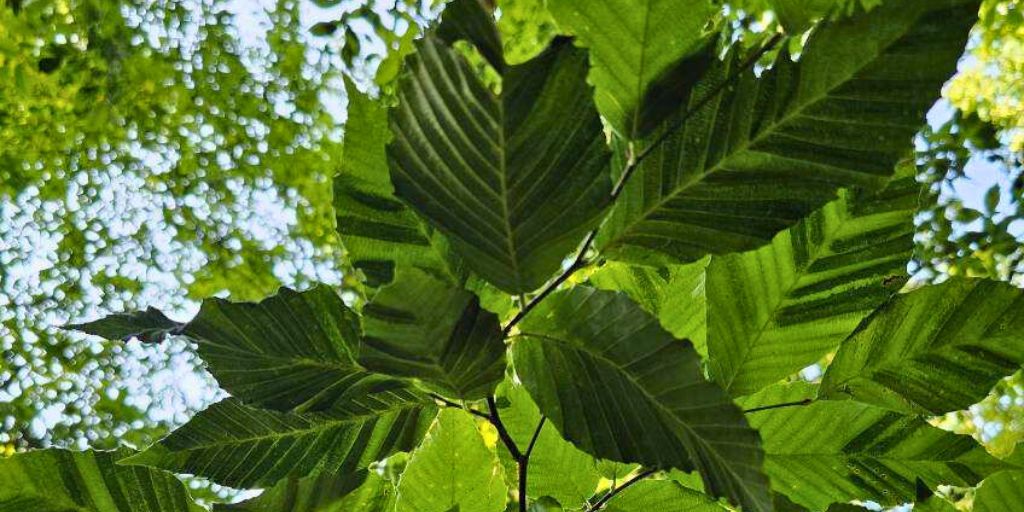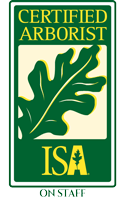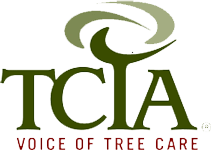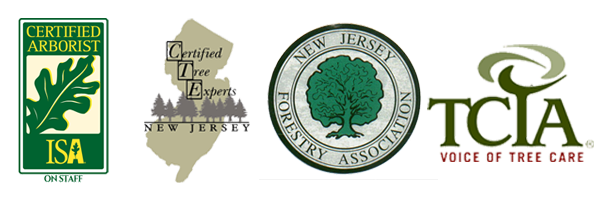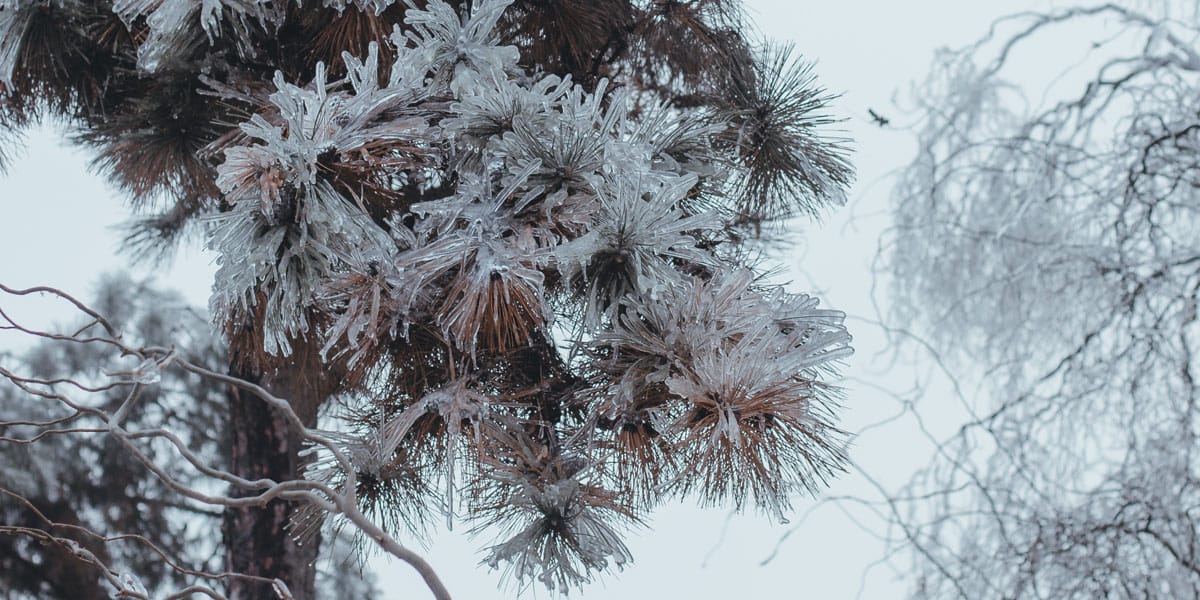Protect & treat your trees
before they get sick or damaged
Healthy trees don't just happen by chance in our (sub)urban environment. It takes proactive care, preventive treatments and, when needed, application of safe and appropriate chemicals to control harmful insects and diseases.

Common tree pests and disease in New Jersey. From left to right: anthracnose, cedar apple rust gall, leafminers, and apple scab.
Common Causes of Tree & Landscape Problems
Early identification is critical for controlling pests and diseases, and preventing irreparable tree damage.
If your trees don't look healthy, it's likely due to problems with pests or diseases, or soil conditions. Often, it's all of these together that are affecting your plants.

FUNGAL & BACTERIAL DISEASES
Flowering trees are especially susceptible to diseases that not only make them look unsightly but can also cause decline and eventual death. For example, you've probably seen apple scab and fireblight on crabapples, anthracnose on dogwoods, and cedar-apple rust on apple trees.
SIGNS TO LOOK FOR -
- blotches, or dark or yellow spots on leaves
- brown, crispy leaf edges
- rotting or spotted fruit
- fuzzy white or grey growth on leaves
- dying needles on conifers
- browning leaves and premature defoliation
- dying branch ends
- cankers or oozing sores on branches and tree trunks

MOSQUITOES & TICKS
Ticks seem to be everywhere these days, even just outside our front door! And mosquitoes are a major pest throughout the day, not just at night. With the increasing number of diseases carried by these pests (such as Lyme disease and West Nile virus), it's more important than ever to be vigilant whenever you're outside and to create a safer environment around your home.
Learn more about ticks and mosquitoes in New Jersey, including the diseases they carry, how to avoid being bitten, and control options.

LEAF- AND TREE-DAMAGING INSECTS
There are many insects that damage (or even kill) trees in Morristown, NJ and surrounding areas. Emerald ash borers are decimating ash trees across the state, caterpillars eat all the leaves off trees, and new invasive pests like spotted lanternfly keep moving in.
SIGNS TO LOOK FOR -
- holes or ragged/chewed edges on leaves
- silk webs, threads or "tents" on branches
- holes in tree bark (especially on ash trees)
- tree suddenly losing leaves in spring or summer
- yellowing, curling or speckled leaves
- bumps on stems and small branches
- sticky substance (and maybe black mold) on leaves or under the tree
- an unusual number of insects flying around the tree

POOR SOIL CONDITIONS
We tend not to think about soil until we notice trees with yellowing leaves, wilting, or stunted growth. Soil in our area is often highly compacted, making it difficult for trees to get enough moisture and oxygen. It's also usually deficient in organic matter and the wide range of nutrients trees need to stay healthy.

Common tree pests and diseases in New Jersey. From left to right: Boxwood blight, fungal leaf spot, insect damage, and spotted lanternfly nymphs.
Prevention & Control For ...
- Apple scab
- Anthracnose
- Rust
- Fireblight
- Japanese beetles
- Leaf miners
- Emerald ash borer
- Spotted lanternfly
- Gypsy moth
- Tent caterpillars
- Scale
- Spider mites
- Aphids
- Hemlock woolly adelgid
- Powdery mildew
- Bacterial leaf scorch
NJ Department of Environmental Protection Pesticide Applicator Business License - #91603B
Contact us for tree health management
Tree Health Treatments
Our Tree Health Management program is customized to the specific needs of your landscape. This is definitely not a case of "one size fits all"!
Pest & Disease Management
We offer a range of treatments for insect pests, fungal problems and bacterial diseases. Treatments are customized to treat the issues while minimizing effects on beneficial insects and other living creatures.
Learn More
Horticultural Oil
WHEN? Spring and fall
This lightweight natural oil is sprayed on trees to suppress pests such as scale, adelgids and mites.
Fungicide Applications
WHEN? 3 - 4 treatments in spring to early summer
Applied as a spray to leaves and tree trunks to prevent fungal leaf diseases, such as scab, anthracnose, and rust.
Insect Control Spray
WHEN? As needed during growing season
Used for immediate control of damaging insect pests. The appropriate timing and insecticide is chosen to target the specific pest (rather than using a broad-spectrum insecticide that would harm all insects).
Soil Injections
WHEN? Spring
A systemic insecticide injected into the tree's root zone to prevent problems with leaf-chewing and sap-sucking insects, such as leaf miners, scale, and Japanese beetle.
Emerald Ash Borer Prevention
WHEN? Mid-May to mid-June
A special insecticide is injected directly into the soil around the tree or sprayed on the bark. From there, it is distributed throughout the living parts of the tree to kill EAB larvae. > Details about EAB
Soil Improvement
When a soil test shows that the soil on your property is lacking in specific nutrients or is outside the optimum pH level, fertilization can help fix the problem.
Deep Root Fertilization
WHEN? Spring and/or fall
A custom blend of nutrients is injected into the soil in the tree's root zone where it can more easily take up the nutrients it needs. Soil injection also prevents problems from fertilizer runoff.
For more details, see our FAQs about tree fertilization, including New Jersey's fertilization law and whether or not trees really need to be fertilized.
Tick & Mosquito Control
Get rid of these disease-carrying pests on your property to protect your family.
Tick & Mosquito Spray
Our proprietary hybrid program is customized to your needs. We offer both synthetic and organic options, including a combination of the two. For example, organic spray can be used near your house, while a stronger synthetic mix is sprayed around the perimeter of your property.
Winter Protection
Some shrubs and small trees need a little extra help to get through the winter without unsightly "winter burn" or leaf damage.
Anti-Desiccant Spray
WHEN? Late fall/early winter
Sprayed on broadleaved evergreens (such as azalea, rhododendron, holly, and boxwood), anti-desiccant helps minimize winter moisture loss from leaves so they don't dry out, turn brown, and fall off.
>> Learn more about anti-desiccant treatment to protect evergreens
At a Glance
About Our Program
We know that trees are healthier (and we believe they're "happier") when grown in the right environment. That's why we collect a soil sample during our first visit with you (when we evaluate your property and give you a proposal).
If you choose to move forward with our Tree Health Management program, we'll conduct a full soil analysis on that sample so we can tailor the program to optimize the health of your trees.
We take a holistic approach to tree and plant health, with a focus on prevention and low-impact treatments. Rather than waiting until severe damage has been done, we prefer to be proactive in heading off issues that we know are likely to occur.
Preventive treatments (such as horticultural oil and creating ideal growing conditions with the right nutrients) are much more gentle on the environment than the chemicals needed to treat a disease or pest outbreak.
A typical program includes:
- Horticultural oil application in spring and fall to suppress insect pests
- Deep root fertilization in spring and fall to give trees the nutrients they need
- Disease and pest treatments as needed to prevent or control problems (we'll recommend specific treatments based on the plants in your landscape and any issues you've experienced in the past)
- Winter tree and shrub protection with anti-desiccant spray (if you have broadleaved evergreens on your property)
While we recommend you follow the program as a whole, it's not required - you're free to pick and choose specific aspects of the program if you prefer.
Your Tree Health Management program includes regular monitoring of your property (for early detection of any problems).
After each visit, you'll receive a report of what was done and any issues that were identified.


